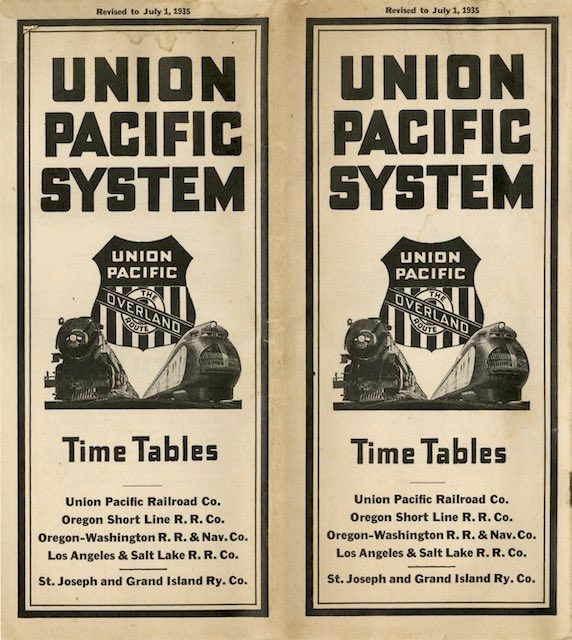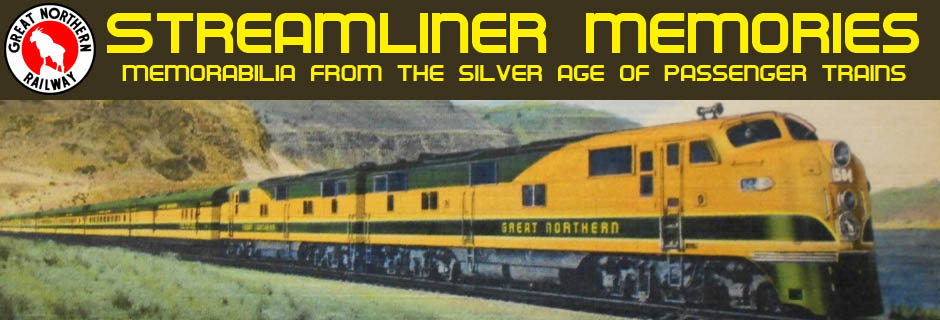The streamliner City of Portland made its inaugural run on June 6, 1935, so this is the first UP timetable since that date. The full-page ad on the front announces “a new era in transcontinental travel,” and for once the advertising copy was 100 percent accurate.
 Click image to download a 30.8-MB PDF of this timetable.
Click image to download a 30.8-MB PDF of this timetable.
In October, 1934, the M-10001 — a locomotive and baggage car, three sleepers, and a coach with a tiny buffet in back — zipped from Los Angeles to New York City in 57 hours, earning it the nickname “Canary Bolt.” Before putting it in revenue service as the City of Portland, UP added a dining-lounge car and had EMD replace the 900-horsepower Diesel with one of 1,200 horsepower. The train was able to go between Portland and Chicago in under 40 hours for an average of 57.4 miles per hour.
The speed was achieved partly by reducing the number of stops. Between Portland and Chicago, the eastbound train stopped in only five cities: Pocatello, Cheyenne, Omaha, Cedar Rapids, and Clinton, Iowa. Westbound the train also stopped in Boise.
Union Pacific was so proud of this train that it gave it the numbers 1 & 2. No Union Pacific train seems to have used those numbers since around 1929, when they applied to the Overland Limited. By 1931, the Overland Limited was renumbered 27 & 28 and renamed the San Francisco Overland Limited, not that there was any confusion since 1920, when UP briefly renamed the Los Angeles Limited as the second section of the Overland Limited.
One-way fare between Chicago and the Pacific Northwest was $34.50. That sounds cheap but in today’s dollars it was more than $750. Still, demand was high and the single train set could only make six round-trips a month, so most trips probably filled almost every seat and sleeping accommodation.
